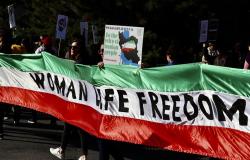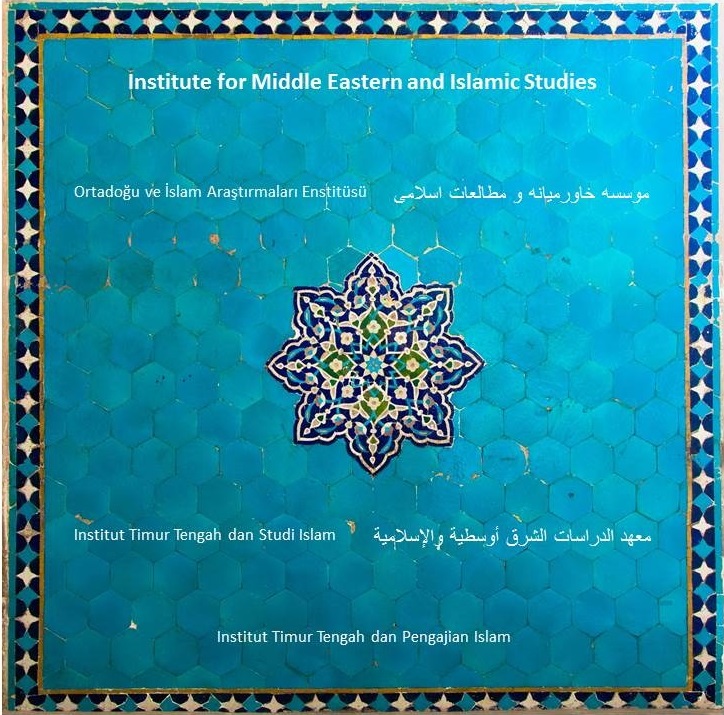From Dissatisfaction to Mobilisation: The Islamic Republic’s Perfect Storm

Anoushiravan Ehteshami argues that a democratising uprising is underway in Iran and traces its roots to three interrelated cyclones. This is the first in a four-part series following an event exploring these developments held at the Institute for the Middle East & Islamic Studies at Durham University.
The latest round of protests which have gripped Iran since September 2022, following the death of a young Iranian woman of Kurdish origin in custody for wearing her veil loosely, have shaken the ruling establishment and awakened the world to the Iranian people’s unequivocal demand for change, for a better and freer life. In these protests, which encompass street marches, student rallies, acts of disobedience, strikes by workers, mass shop closures, and yes also violent acts against the repressive instruments of the regime, the people are directly challenging the very legitimacy of the regime which thus far had shown a sense of assuredness of not only enjoying the consent of the people for it to govern, but also of its ‘right’ to rule. The mass mobilisations are challenging the narrative of the regime as much as the legitimacy of the regime. Iran’s grey men leadership seems bewildered but still behaves as though it is assured of its right to dictate to the people. But no one is any longer blind to the profound social transformations which have led to this pressure point.
The protests, I would argue, are at their core a function of a democratising uprising – as yet without a clear leadership, a manifesto beyond wanting an end to the Islamic Republic, or a strategy for overthrowing the ruling order. So, how did we get here? I would argue that the Islamic Republic’s perfect storm has come about in three interrelated cyclones: A general socioeconomic crisis; a political impasse leading to a brittle and unresponsive political system; and a prolonged period of international isolation which has helped to suck the life out of the country. Let me deal with each ‘cyclone’ in turn.
 Iran’s socioeconomic crisis
Iran’s socioeconomic crisis
Iran’s a rich country by any measure. Iran is a large country, endowed with vast and valuable natural resources, is rare for having extensive crude oil and natural gas deposits, enjoys a unique geography that gives it plenty of opportunity to grow its own food, as well as access to vast swaths of western and central Asia. It is also on the crossroads of communication and transportation networks being built across Asia and has a strong geopolitical standing with regard to the Persian Gulf and the Caspian Sea. But it also has a large, young, dynamic, and creative population, who are well-educated, networked, and keen to move forward. Iranians are not complacent but are aspirational.
Yet, the economy is on its knees due to decades of neglect and muddled policies, crippling sanctions imposed on it for bad behaviour, and endemic corruption, which in turn have stymied growth in trade opportunities and inward foreign direct investment, the development of the private sector, and job opportunities. Approximately 50 million of Iran’s 85 million population are under the age of 30 and ready to devote their energies for improving the country, but they are confronted by high unemployment of over 11%, which goes up to as high as 25% among the youth. Inflation is nearly 30%, and in many sectors reaches as high 80%. There is a huge scarcity in basic goods, medicines, food stuffs, and critical intermediary imports needed to turn the wheels of industry and keeping the economy going more broadly.
Sanctions are depriving the country of billions of dollars of income from its oil deposits, limiting its ability to develop its LNG capacity to exploit its fair share of the joint natural gas field, and to compete with Qatar and others and to cash in on the high international demand for natural gas following Russia’s invasion of Ukraine and the scramble for LNG in response to COP26 and COP27 climate change imperatives. But at the same time sanctions are constantly injecting life into Iran’s system of crony capitalism enriching regime members and their allies, literally thus fuelling corruption, nepotism, and cronyism. Sanctions have also crushed the Iranian national currency, the Rial, making inflation even more endemic and cost of living more expensive.
The result has been the crushing of society. Poverty is rampant and inequality engrained. Thus, just 10% of the population, who are invariably linked to the establishment, control over 50% of the country’s national wealth. Conversely, 20% of the lowest income group hold 0.5% of the country’s national wealth. One-third of the population now live under the poverty line, purchasing power has dropped by over 40% as incomes have been squeezed, and the middle class – the stabilising strata of any society – now constitutes just 35% of the population. With oil exports at well under one million barrels per day and thus hard currency incomes from this major source of income hovering at around $40 billion per year (compared with $70-80 billion per year), the prospects for improvement remain dim.
Political impasse
The regime’s persona projects an image of invincibility, but what appears as invincible to the establishment is seen as a regime to be uncompromising, unresponsive, and unaccountable to the people. This popular perception is daily reinforced by the behaviour of its decision makers and also with the way in which the regime has blatantly manipulated elections – from control of the candidates at both parliamentary and presidential levels – to produce results as favourable to the Supreme Leader Khamenei and his clique. As a result, voter enthusiasm has dampened and election participation rates in turn has declined. Ironically, the control of the Majlis and the Presidency by the hard-line faction of the conservative camp, in 2020 and 2021 respectively, has diminished the regime’s decision making prowess and ability to respond to national and international challenges. Incompetence and lacklustre performance have fed the public’s discontent and anger. Absence of opportunity, blatant corruption and nepotism and the hardening of the regime’s core at the expense of the reformists who had thus far acted as a mediating force between the regime and society have made the regime less flexible as well as less wise in its deliberations and policy choices. The strangulation of the political space by the hard right and their para-statal allies has unleashed public anger. Frustration has turned into protest and demands for regime change.
Again, the regime seems unfit for purpose, compounding popular anger by their inability to respond positively and sympathetically to the crisis which is largely of their own making. Securitisation of social relations, as seen in the unwarranted harsh treatment of the late Mahsa Amini and protesters since at least 2009 have limited space for dialogue, also inhibiting the regime’s flexibility. From the public’s point of view, the regime is not only inflexible and intransigent, but also hostile. This cyclone has spun out of control and prospects of ‘national peace’ are as dim now as they have been for a generation.
International isolation
Sanctions and Iran’s international isolation have corroded the country, its headroom to respond to such crises as the covid-19 pandemic, water shortages, soil erosion, loss of habitat, etc., are thus adding to people’s anxieties. With the indefinite postponement of discussions relating to JCPoA2.0 another nail has been placed in the coffin of national hope for improvement following the earlier brief reopening up of the country to the world. Continuing isolation and the regime’s contempt for negotiations has further angered society, which has been desperate to see Iran re-joining the highway of development and integration. Regime’s conduct, in material and financial terms, in Lebanon, Syria, Iraq, Yemen, Palestine, Afghanistan, has added to popular anger. Demonstrators have also demanded in the past an end to the regime’s adventurism and an end to its financial support for its non-state allies overseas, for its use of force in the region; and intellectuals as well as regime insiders have voiced concern about the dangers of the regime openly and blatantly showing its support for Russia and its invasion of Ukraine. Popular sentiment has been matched by the attacks on Iran by many of its Arab neighbours for continuous interference in internal affairs of Arab countries, leading to the Islamic Republic being called an ‘occupier’ of Arab lands by the Arab League, a label thus far reserved for Israel. To the people, the regime is a stain on the country’s national identity and on their proud civilisation. Regime’s external behaviour does not enjoy popular support and the more it confronts the world the more disenchanted society has become.
And then there is the consequences of the Ukraine war for Iran to consider. Firstly, the European Union has abandoned any mediation in taking the JCPoA2.0 to fruition, adding to the country’s woes. The war and Iran’s support for the aggressor, in other words, have damaged Iran’s diplomatic position and weakened its negotiating hand. Secondly, it is very likely that the Islamic Republic will be punished by the UN for violating the UNSC resolution 2231 (part of JCPoA1.0) which prohibited Iran from trade (imports or exports) in missile-related technologies. Its open transfer of missiles and missile technologies to Russia (and others in the region) means that Iran is in direct violation of its international obligations. Thirdly, post-war, Ukraine will be seeking war reparations from Russia, but also likely from those who supported the aggressor in its campaign. Iran could be a target of reparations for billions of dollars from Ukraine, which is also likely to be supported by Ukraine’s Western allies. Given Iran’s current financial state, any such bills could break the bank completely, add further pressure on the people and cause further deprivation.
These, then, are the headwinds facing Iran and the three interrelated dimensions of the perfect storm now confronting the regime.
Prospects for change
Change on the scale that the people are demanding, and the country badly needs, are unlikely to happen overnight. It will be worth our while remembering that the Islamic revolution itself took several years to mature and finally yield results in 1979. But what is clear is that the vast majority of the population have given up on the regime being able to reform itself, be able to respond to public demands, let alone embrace their aspirations for change. In this context, we are now seeing a hardening of the protesters’ position. We thus see a clear escalation of people’s demands. So, what started as ‘where is my vote’ protests in 2009 in response to the opaque re-election of Mahmood Ahmadinejad as president has changed to ‘death to dictator’, ‘death to the Islamic Republic’, ‘death to Khamenei’ today.
While the regime may be able to put out the fires of protest eventually, the fact that they are occurring more frequently, more intensively, and across social classes, ethnicities, and localities, means that the regime will have to devote more and more energy and resource towards surveillance, repression, and prosecution, thus limiting its ability to govern efficiently or effectively.
In the absence of JCPoA2.0 going forward, moreover, the regime’s ability to improve the economy is also limited, adding to its problems as well as to social unrest and anxiety about the future.
Finally, once a regime loses its cohesion and elite factions start fighting amongst themselves, then change will happen at a more accelerated pace. The regime of the Islamic Republic is no exception. Defiance of authority in Iran will continue, eroding the regime’s narrative, its sense of legitimacy and also standing in the world. Where Iran is in this cycle of change and political struggle is hard to predict of course, but the end game is increasingly predictable: The Islamic Republic as currently constituted will likely lose its current form, and it could even implode in the face of the perfect storm it itself has largely fanned. Political Islam’s claim to open-ended claim to rule and governance are being tested in Iran, as indeed they were in Egypt and Sudan in recent times. While in Sudan the removal of Islamists from power promises a more open and democratic polity, the experience of Egypt following the removal of President Morsi has been a harsh military-led autocracy. Iranian people, in my view, are already charting a democratic and secular path towards a better and more inclusive future. Fears of chaos following a disorderly or violent fall of the current order are real and well-founded, particularly given the fires the regime itself has lit with Iran’s patchwork of minorities. But given the strength of Iran’s civil society and the mass desire for constructive change, as well as international support for the demands of the protesters, I remain (relatively) optimistic that disorder can be avoided. On the flip side of chaos, also, I would add that Iran’s sizeable expatriate community is unlikely to sit ideally by and watch the homeland crumble. Given that Iranian expats have a collective net worth of around $2.5 trillion, their interventions for a better country can prove transformative not only politically but also economically.
Iranian people have everything to play for and they have shown that they can break down the wall of fear, fight repression, and dream of a better country and a better future. Their slogan of ‘Women, Life, Freedom’ epitomises their vision of the future, in juxtaposition to the Islamic Republic’s diet of discrimination, repression, and isolation.
Part 2 - The Iranian Protests: Change may not be immediate but is inevitable
Prof Anoush Ehteshami is a Professor of International Relations and Director of the al-Sabah Programme in the School of Government and International Affairs at Durham University. Amongst his publications is Iran: Stuck in Transition (Routledge, 2017).
Image: Taymaz Valley via Flickr (CC BY 2.0)


